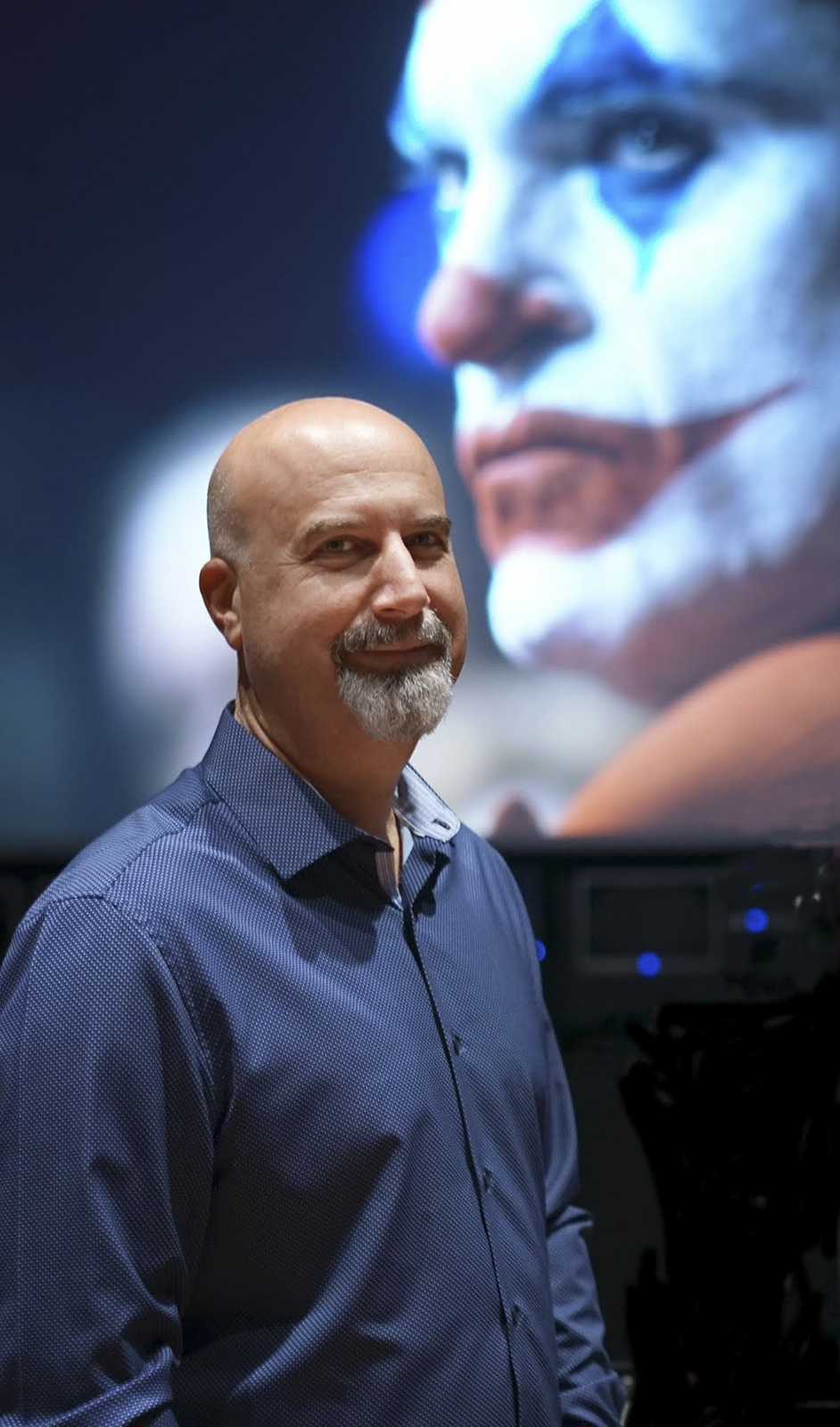Q&A: Oscar-nominated sound mixer Tom Ozanich mixes audience into process for ‘Joker’

As the sound mixer for the Oscar-nominated film, “Joker,” Tom Ozanich utilized sound to transform the city of Gotham into its own character as he tracked Arthur Fleck’s descent into madness. (Courtesy of Warner Bros. Pictures)
By Kennedy Hill
Feb. 6, 2020 11:07 p.m.
Arthur Fleck knew what was going on in his head, but only “Joker” sound mixer Tom Ozanich knew how it sounded.
On Jan. 13, Ozanich garnered his second Oscar nomination for his work on director Todd Phillips’ “Joker,” a thriller detailing the backstory of the eponymous Gotham villain. As the film followed Arthur Fleck’s transformation into the Joker, Ozanich said the soundtrack emoted the character’s descent into madness by becoming more chaotic and disorienting as the film progressed.
[Related: Movie review: ‘Joker’ successfully invites audience into its descent into madness]
Ozanich spoke to the Daily Bruin’s Kennedy Hill about how he transformed the city of Gotham into a character in itself, how Joker’s mind acted as a source of inspiration and the overall conception of the film’s rhythm.
Daily Bruin: “Joker” is a movie that keeps the audience on edge. Did you and the director discuss how you wanted the sound to play a part in that?
Tom Ozanich: It was critical to make it feel real. We did a lot of work to try to put the audience in the place of the various spaces that Arthur is actually in, whether that’s his apartment or out on the street or at HaHa’s where he works. The sound is essential to Arthur’s character but also to the antagonist, (which) is just simply the city, society and the world in which he lives that doesn’t accept him. The sound is the main thing that communicates how harsh and gritty and unfriendly and ugly that world is.
There’s a constant tone to what’s going on in the world around him. We recorded people arguing in their apartments behind closed doors and a bunch of yelling out on the street. All that stuff (is) constantly peppered in through the movie, pressuring him and pressuring the audience.
DB: Were you trying to make the city sound real in an objective sense, or did you base it on how Arthur was hearing it?
TO: The whole movie pretty much revolves around his state of mind. Rather than it feeling like you’re looking through a window into the movie screen, we’re trying to envelop you with sound to put you in the room and experience that stuff with him. That’s where the processing of everything is so critical – hearing the reverb in the space that you’re in and processing the sounds that are outside and how those things are filtered and placed around.
But, obviously, the movie (has) a component of reality and nonreality. When you’re watching the movie for the first time, Arthur’s warped perspective tricks you into not knowing the difference most of the time. So, even when we go into some of the unreal places, they’re still sold to you as reality. They’re real to Arthur, so we have to believe that along with him.
DB: As Arthur falls deeper into his madness throughout the film, how does the sound change along with him?
TO: It becomes a bit more abstract. Those are subtle clues in the soundtrack because we always are playing with the idea of whether anything that’s happening is real or not. There’s a constant attempt to make it feel real all of the time.
The sound starts simple and very reality based. Then tension starts building, and the train (sound) gets a little denser and heavier and louder – occurring more often. The guys are yelling and laughing at him and there’s this cacophony building. Then the music starts to come in, and then that starts to go big. It all explodes. It’s like climbing a mountain of intensity.
[Related: Second Take: ‘Parasite’ and ‘Joker’ handle weighty topic of class divide to different results]
DB: What are some elements added to the sound that audiences might not have realized, but intensifies the mood of the film?
TO: There’s a lot of layers. Some things like people constantly arguing, yelling and honking are going on all the time. But there are also tonal elements, like winds, buzzing electricity and background sounds adding to the nuanced darkness of the world. When Arthur goes to Arkham Asylum, there are lights buzzing, (but you’re not) really aware of how imposing that is because you’re focused on their conversation. (The) same kind of layers exists across the whole movie.
DB: Arthur’s bathroom dance marked his transformation into the Joker. How did you and the sound team conceptualize the audio for this scene?
TO: We wanted to go from a very hard-rooted feeling of reality to a completely nonreality where you’re not sure what’s real and what is going on in his head but in a smooth, graceful way. That ending with him dancing in the bathroom became an inspiration for how we treated the entire movie.
The sound of the movie is very much like that dance – it’s a slow, graceful movement where you move from scene to scene. There’s a very delicate balance of how to play that music versus the lights that are flickering, the footsteps and him breathing. We use the balance of those elements to lead you to understand his state of mind. Had we played it differently, at a larger, more realistic level, it would have completely changed the feeling of that scene and what you understood about what was happening.


